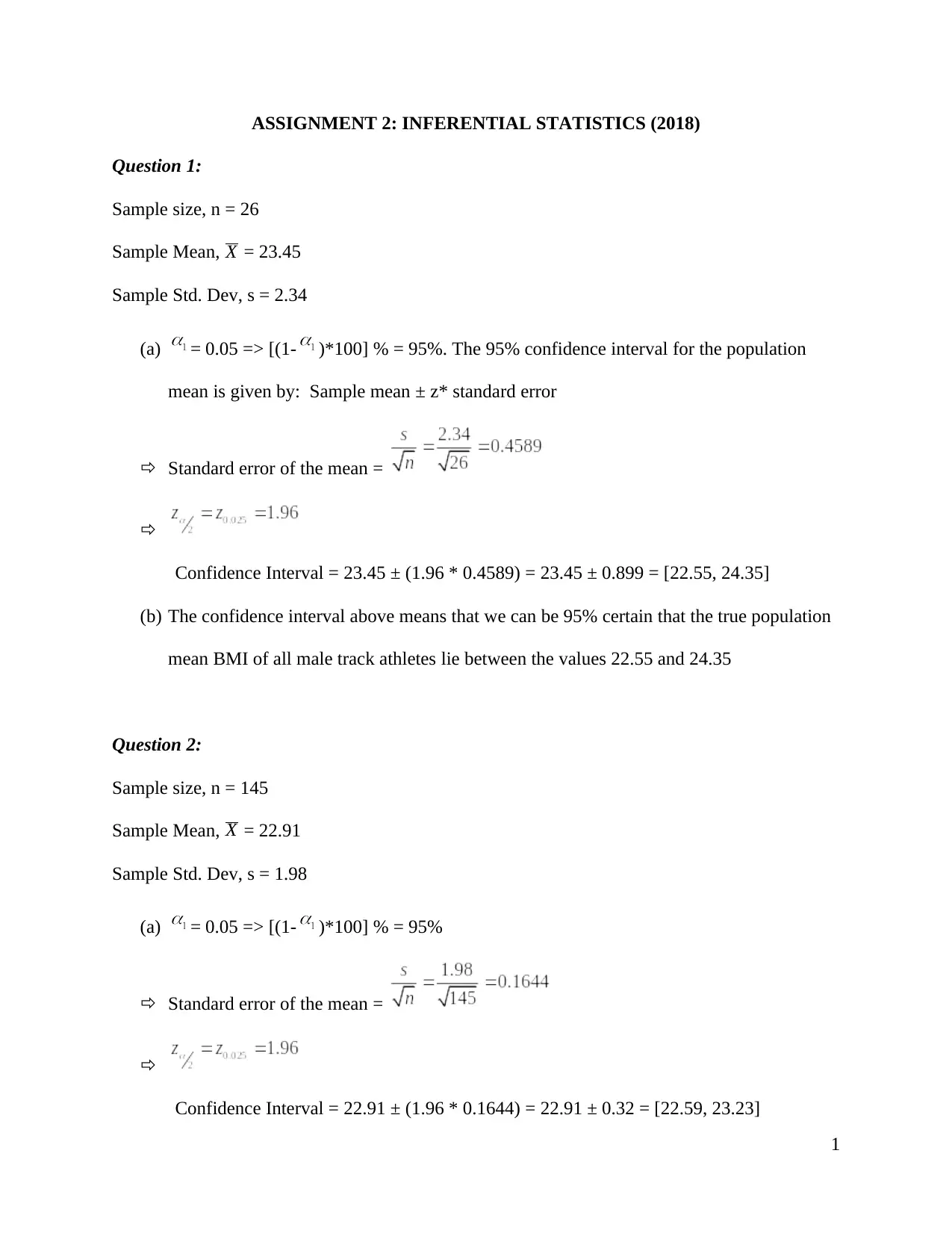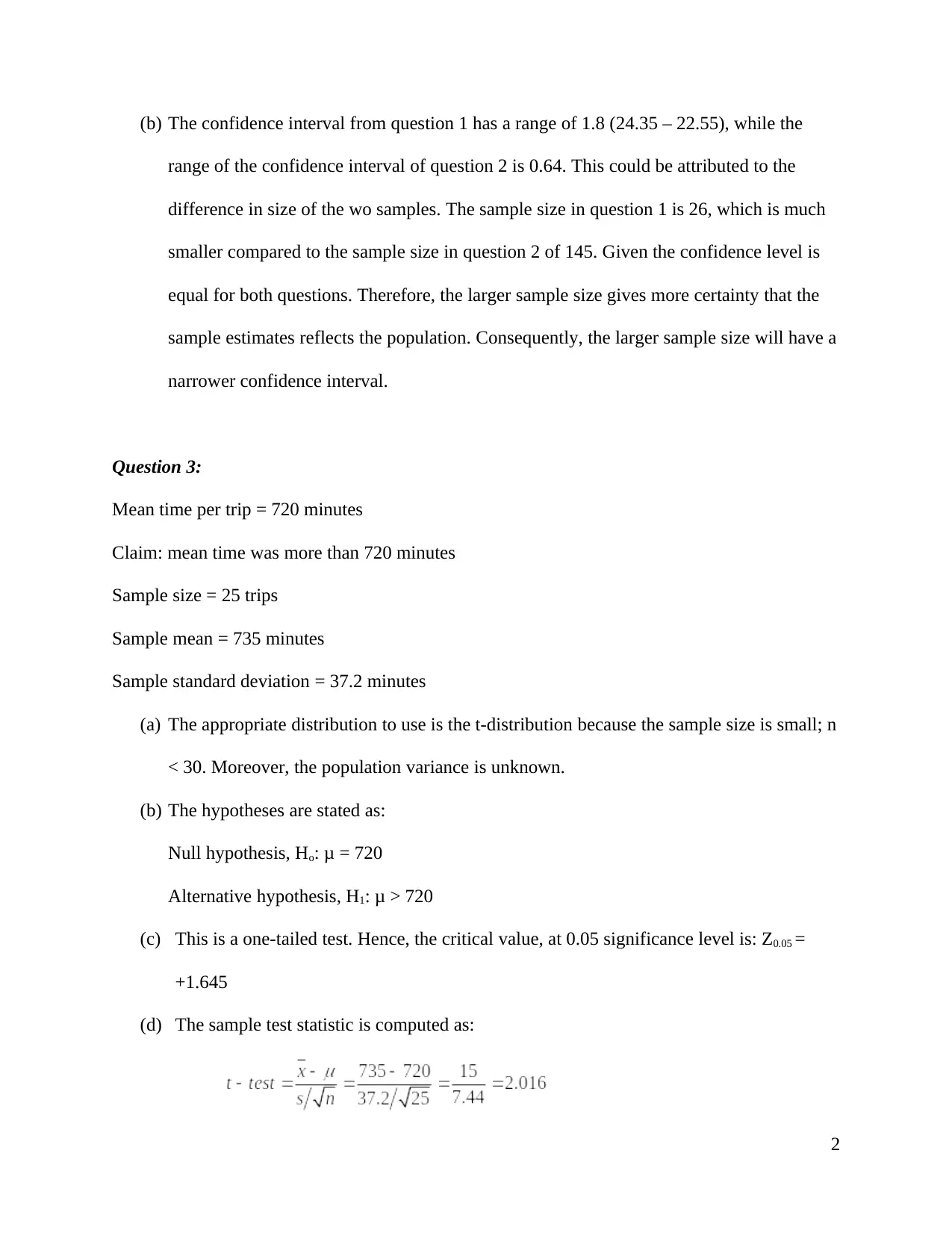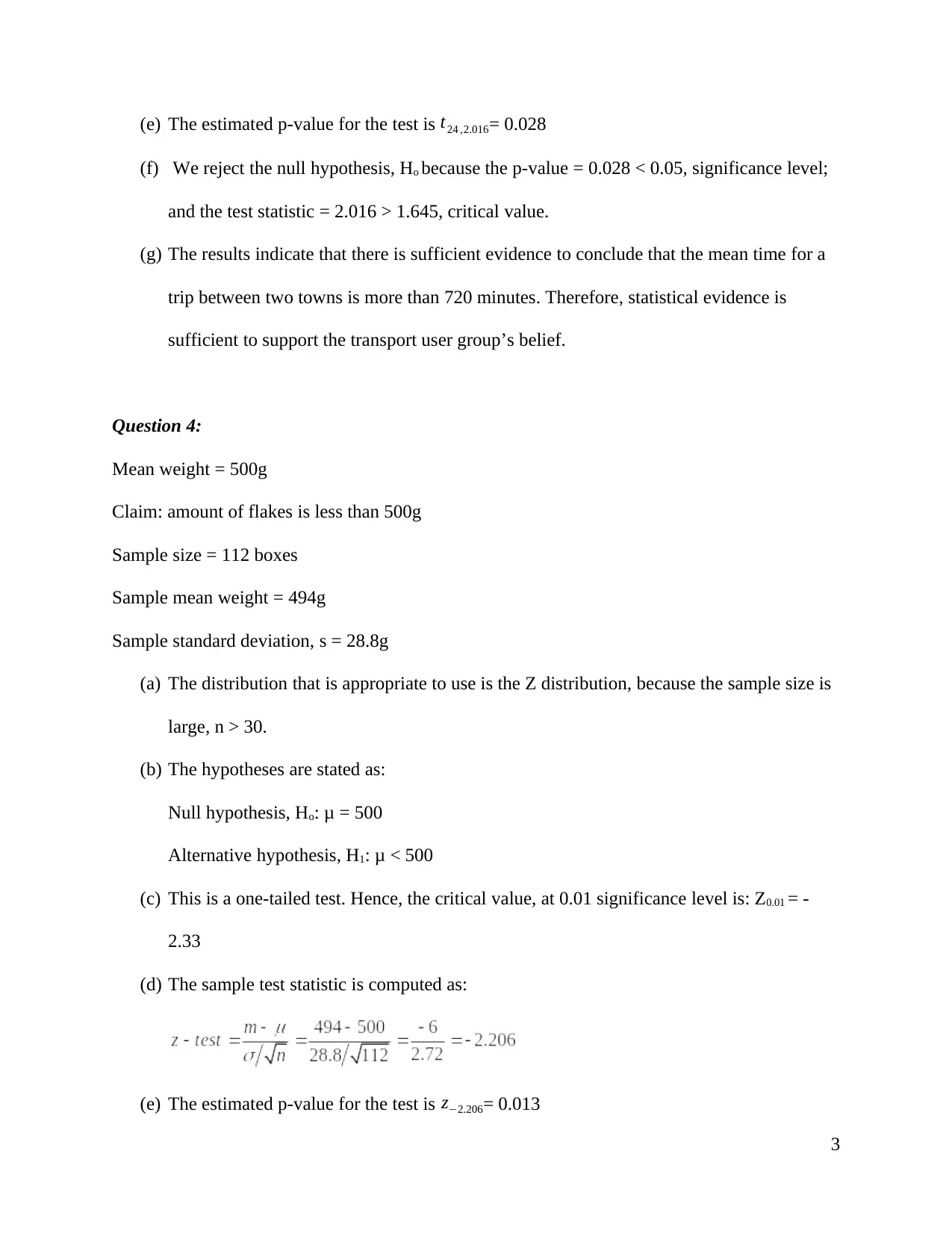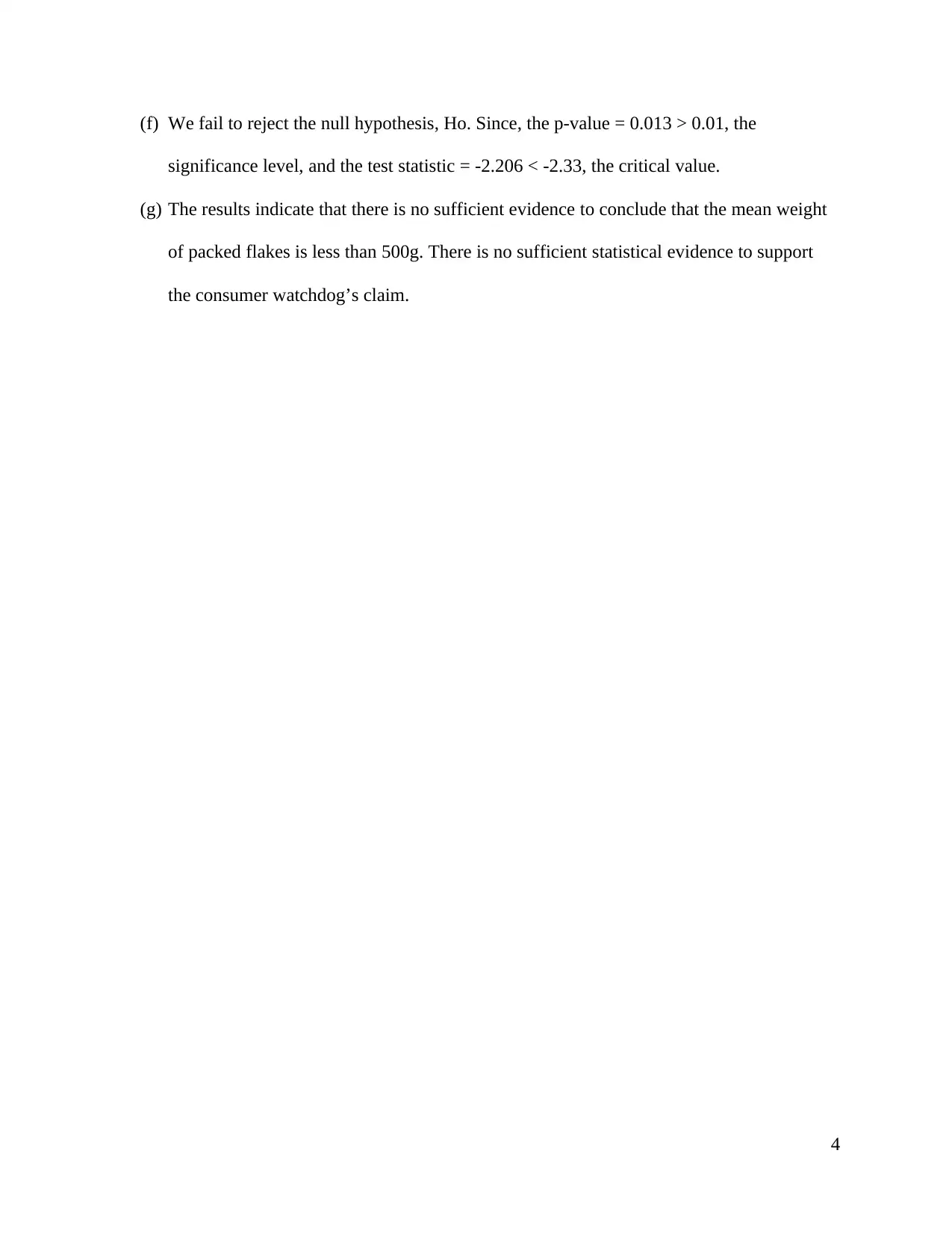Inferential Statistics: Confidence Intervals & Hypothesis Testing 2018
VerifiedAdded on 2023/06/03
|4
|745
|257
Homework Assignment
AI Summary
This assignment focuses on inferential statistics, covering confidence intervals and hypothesis testing. It includes problems related to calculating confidence intervals for population means based on sample data, comparing confidence intervals with different sample sizes, and conducting hypothesis tests to evaluate claims about population means. The solutions utilize both t-distributions and z-distributions depending on the sample size and knowledge of population variance. The assignment involves determining null and alternative hypotheses, calculating test statistics and p-values, and making conclusions based on the significance level. Specifically, it addresses scenarios involving BMI of athletes and packaged flakes weight, providing detailed step-by-step calculations and interpretations.
1 out of 4











![[object Object]](/_next/static/media/star-bottom.7253800d.svg)